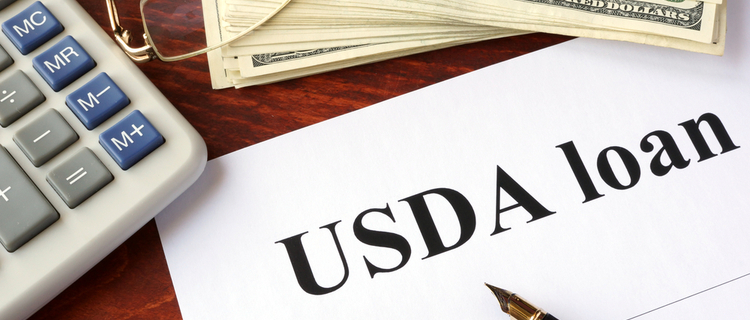
USDA Mortgage Loan Florida, 100% Financing, Zero Down Payment
- No Down Payment Required
- Credit Scores as low as 620
- No Waiting for Prior Short Sales
- No Cash Reserves Required
- No Limit on Seller Concessions
- Primary Residence Only
- Finance All Closing Costs up to the Appraised Value
- First-Time Home Buyers Allowed
- The Monthly PMI is only .5% annually
- Up to $10,000 repair escrow hold back ok
Below we have listed the current USDA mortgage loan fees for 2018. All government home loans (USDA, FHA, VA) have related loans fees. Although this upfront fee can be called many different names between loan programs, they are essentially the same thing. FHA refers to their fee as “upfront mortgage insurance” (UFMIP) VA refers to this as a “funding fee” USDA Rural Housing calls this fee a “Guarantee Fee”
All USDA loans (purchase and refinance) require a one-time Guarantee Fee that is added to the borrower’s loan. The current amount of the USDA guarantee fee is 1%. Example – if a borrower was purchasing a home 100% financing for $150,000, the adjusted loan amount with the 1% USDA guarantee fee would be $151,500. $1,500 is added to the base loan amount.
In addition to this one-time Guarantee Fee, USDA loans also require an annual fee that is added to the monthly mortgage payment. Basically, the “annual fee” is monthly mortgage insurance – or more commonly known as “PMI” Again, like the above, it can have many different names. The current amount of this fee is .5%.
Example – if a borrower was purchasing a home 100% financing for $150,000. $150,000 x .0035= $525.00. $525 is the yearly amount, now divide this by 12 months = $43.75 is the amount of monthly mortgage insurance that will be added to the borrower’s USDA loan.
Keep in mind these fees aren’t the only loan-related fees or closing costs with USDA loans. USDA mortgages (like other loans) will also have all the customary closing costs that come with a Florida mortgage. Appraisal, Survey, Title, Government taxes, lender fees, in addition to all the home insurance and tax reserves for your escrow account. All in all, it’s a good idea to figure about 4% of the purchase price is needed for all closing costs and prepaid reserves. This figure can sway a few percent, either way, depending on the loan amount. Higher USDA loan amounts will be much less of a percentage because many of the USDA closing costs ( appraisal, survey, etc) are fixed costs and don’t change based on the home buyer’s purchase price/loan amount.
Click Here to view Eligibility Map
Guaranteed Rural Housing Loans have been around for some time, and have helped many families and individuals purchase homes in rural areas.
Guaranteed loans can be made on either new or existing homes that are structurally sound and in good repair. There are no restrictions on size or design of the home financed, but it cannot be used to generate income. The loans may be used to purchase or refinance a residence.
If the appraised value is higher than the sales price, it is possible to finance closing costs and prepaid expenses in into the loan amount. Sellers are permitted to pay the buyer’s closing costs as well.
The buyers must occupy the home as their primary residence. Their income must not exceed the moderate income limits established by the county.
There is an automated income eligibility calculator on the USDA Web site at http://eligibility.sc.egov.usda.gov. This site gives information about eligible property locations as well.
To qualify for this program, borrowers must have a good credit history and verifiable income. They must be U.S. citizens or permanent resident aliens. Guaranteed rural housing loans require that the house payment, including principal, interest, taxes, and insurance, should not exceed 29 percent of the borrower’s gross income. The total debts, including the new house payment divided by the borrower’s gross income, should not exceed 41 percent.
Some exceptions to the qualifying ratios may be made to borrowers with high credit scores, a history of savings or similar current housing expense. Other factors to overcome high ratios may be the completion of homebuyer education classes or future income of a spouse or other co-borrower who generally has worked and is seeking employment.
The program does not require that borrowers be first-time home buyers, but they may not own a home within commuting distance of the home being purchased. Borrowers must be unable to obtain a home loan under other programs requiring a down payment. The loans also may be made to refinance either existing USDA Rural Development Guaranteed Housing or their Section 502 Direct housing loans.
The homes being financed through this program must have access from a street, road or driveway, and all streets and roads must be publicly maintained on a hard surface. The land cannot be subdivided.
